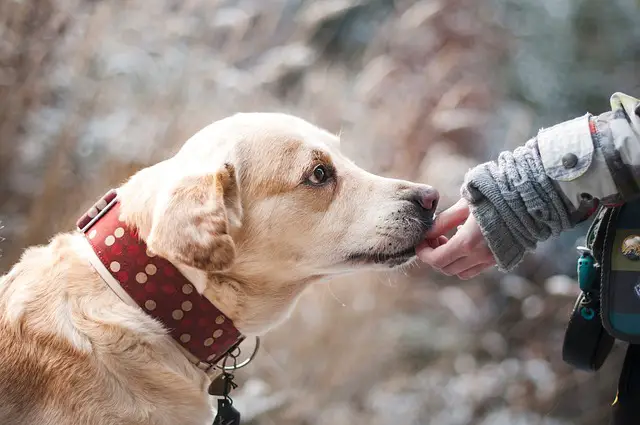Taking your furry best friend on a plane has become more popular in the recent years. Thinking of travelling with dogs on planes? good news – many airlines have now made it easier for pet owners to bring their pets along on their travels.
It makes sense – dogs are more than just a pet but their family. To ensure that everyone remains safe and a pleasant journey for all, there are a few important steps to take before bringing your pooch on board the flight. Here’s what you need to know about travelling with dogs on planes.
Travelling with Dogs on Planes – A Comprehensive Guide
Air travel with your four-legged companion can be very rewarding. However, it requires careful preparation and research, particularly if your entire trip will take place on an airplane.
It’s important to note that not all airlines have the same pet policies, so you will need to check ahead of time to ensure you are aware of the rules and regulations for your particular airline.
Your first step should be to contact the airline directly and inquire about pet policies. In addition to asking about what, if any, additional fees you may incur for bringing your pet along, this is also a good opportunity to ask questions that may not be answered on the airline’s website. You should also be aware of any restrictions on particular breeds of animals that the airline may have.
Your dog will need a carrier for the flight, and the carrier should be large enough for the animal to be able to stand up, turn around, and lie down in. The specifics of the type of carrier you will need will depend on the regulations of the specific airline, so be sure to ask for details during your initial contact.
Since you will likely need to purchase a specialized carrier for flying, it might be a good idea to look for one that you can use as a “house carrier” as well, so your pet is accustomed to being inside prior to air travel. It’s also highly recommended that you take your pet for a few practice runs in the car while inside the carrier. This will help reduce the amount of stress that your pet experiences during air travel.
Familiarize Your Dog with Security Procedures
Unfortunately, due to heightened security measures after the events of September 11th, all individuals and animals travelling by air must go through a security screening process. Domestic and international airports have stricter rules and regulations than ever before.
Most airports are used to accommodating pet owners and the process is generally quite efficient; however, it is still important for both you and your pet to become familiar with the process to avoid any potential issues.
Airlines may have different procedures and security requirements for travelling with an animal. For instance, some may require that cats and dogs travel in special carrying cases or cages that are secure to the point that airport security can guarantee that the animal has not been inside the aircraft cabin prior to the flight.
Other airlines may allow pets to remain in their regular carriers throughout the entire security screening process. In any case, be sure to inquire what the guidelines are in advance.
Airplane Etiquette for Pet Owners
Once you’ve completed the security process and are on board the plane, it’s important that you follow a few basic rules when travelling with your pet. First of all, no matter how much you may want to, do not allow your pet out of the carrier during the flight.
Also, be courteous to your fellow passengers by taking turns if necessary to allow other individuals to use the restroom. Finally, if your pet appears to be exhibiting signs of distress, it is best to wait until you have landed to try to make them more comfortable.
Preventing Stress and Anxiety During the Flight
It’s natural for pets to feel anxious in unfamiliar environments, so it is important to make sure your furry friend is relaxed and comfortable during the flight. In order to prevent stress and anxiety on board the airplane, you should try to acclimate your pet to the interior of an airplane in advance of the flight.
Taking your pet for a practice flight with an empty plane (available at some airports) may be a good way to gradually get your pet used to an airborne environment.
To help make the flight more comfortable, consider bringing familiar items from home, such as toys, treats, and blankets. These items will help your pet associate the flight with something positive and help keep them calm during the flight.
Be sure to also provide plenty of water, as pet dehydration at high altitudes is a very real risk.
Health Considerations for Travelling Pets
It goes without saying that the health and well-being of your pet is of utmost importance, particularly when travelling by air. Prior to booking any tickets, be sure to consult with your veterinarian for any advice or special arrangements that may need to be made. Flight attendants cannot provide medical attention to pets, so any special instructions should be provided to the airline ahead of time.
Your veterinarian can also provide you with a physical health examination to ensure your pet is healthy enough to travel. The health of your pet should be considered carefully, as animals with health conditions such as heart disease, epilepsy, and diabetes may be at a greater risk of complications during the flight.
It is recommended that the animal receive a flea and tick treatment prior to the flight. This is especially important if your pet is travelling internationally, as you may be required to present the original vaccination certificate at customs.
The Benefits of flying Your Pet on Private Aircraft
For animal owners who are looking for a safer and more convenient alternative to flying with their pets on commercial airlines, there is the option of chartering a private aircraft. By flying privately, you can avoid the hassles of commercial air travel, such as long lines at check-in, cramped seating, and potential delays.
This is especially appealing for those who are travelling with more than one pet, as commercial airlines may have restrictions on the number of animals allowed per plane.
Flying privately also allows you to customize your flight to the exact needs of you and your pet. This includes customizing the time, route, and even the size of the aircraft. You can also choose the destination airport, which can be extremely helpful if you are travelling to a less-populated area or a smaller regional airport.
This is especially beneficial if you are travelling with a very large dog, as some commercial airlines may require your pet to travel in a crate offered only at select airports.
Travelling on an airplane with your pet can be a highly rewarding experience if done correctly. Before you embark on your journey, make sure you’ve taken the time to research the airline’s regulations, familiarize your pet with the carriers and security process, and consult your veterinarian for any health concerns. Once you’ve taken the necessary precautions, you’re sure to have an exciting and enjoyable flight with your four-legged friend!
FAQs about Travelling with Dogs on Planes
Yes, it is permissible to travel with a pet when flying provided that all guidelines put forth by the airline are adhered to. Different airlines may have different rules regarding travelling with pets, so make sure to check with the airline you are travelling with for details.
When travelling with a pet, it is generally necessary to carry a valid health and vaccination certificate, a certificate of fitness for air travel, and a certificate (if applicable) showing that your pet has trained for air travel. It is also important to check with the airline regarding travel documents and permits required.
In general, pets that are at least 8 weeks old can fly, although some airlines may have stricter regulations and might not accept animals under a certain age. It is always best to discuss age regulations with the airline that you are travelling with.
Ideally, it is best to get your pet used to the carrier before travelling. This can help ensure that your pet stays relaxed during the journey. Make sure to familiarize your pet with the type of carrier you will be using and get it accustomed to staying in the carrier for some time.
Generally, pets will be seated in the cargo hold of the plane, depending on the size of the pet and the type of carrier used. To be sure, it is always best to check with the airline.
Yes. Different airlines may have restrictions on certain breeds and sizes of pets. If you are unsure of whether or not your pet is allowed to travel with you, it is best to check with the airline before booking the ticket.
Yes. You can bring food and treats for your pet, but make sure they are properly packed. Most airlines will allow passengers to bring a certain amount of pet food and treats, but it is always best to check with the airline beforehand to avoid any issues at the check-in counter.
When travelling with a pet, it is best to arrive at least an hour and a half before the scheduled flight so that you have enough time to go through the check-in process, clear security, and board the plane. This will also give you enough time to ensure your pet is comfortable and settled before the flight.
Wrapping Things Up
Travelling with dogs on planes can be a hassle, but with some planning and preparation, it doesn’t have to be stressful. It is important to be prepared in advance and to familiarize yourself with the airline’s pet policies. Confirm that your pet is accepted on board and understand your responsibilities as a pet owner. Also, make sure to reserve space for your pet ahead of time and plan early to ensure a smooth journey.
By doing the research, keeping your dog calm and comfortable, and having all the necessary documents on hand, you can be sure that your pet will have a safe and pleasant trip. If you follow the rules, you can rest assured that travelling with your dog on a plane is an enjoyable – and often necessary – experience.






